 Image of an extremely remote part of the universe, many galaxies are in the tens of billions of light years from us
Image of an extremely remote part of the universe, many galaxies are in the tens of billions of light years from usSeveral fundamental facts are connected with the Universe - its origin, its history, its current state - which are very difficult to put in consciousness. One of them is the Big Bang, the idea that the Universe began a certain number of years ago, namely, 13.8 billion. Then the first moment happened, from which we can describe the Universe as we know it today: filled with matter and radiation , and ingredients that eventually grew into stars, galaxies, planets and people. How far can we look? You may think that since everything in the universe is limited by the speed of light, it will be a period of 13.8 billion years. But this is not the case, and one of the readers wants to know:
How can we study a piece of space measuring 92 billion miles [apparently, light years were meant - approx. transl.], when the light from the edges went to us only 13.7 billion years? Even if we assume that these points have moved away from us further during the journey of light, and we expect where they should be, and not where we see them, and considering that the space at such distances expands faster from, it still seems that too large numbers.
This problem can be approached from three sides, but only one will be correct.
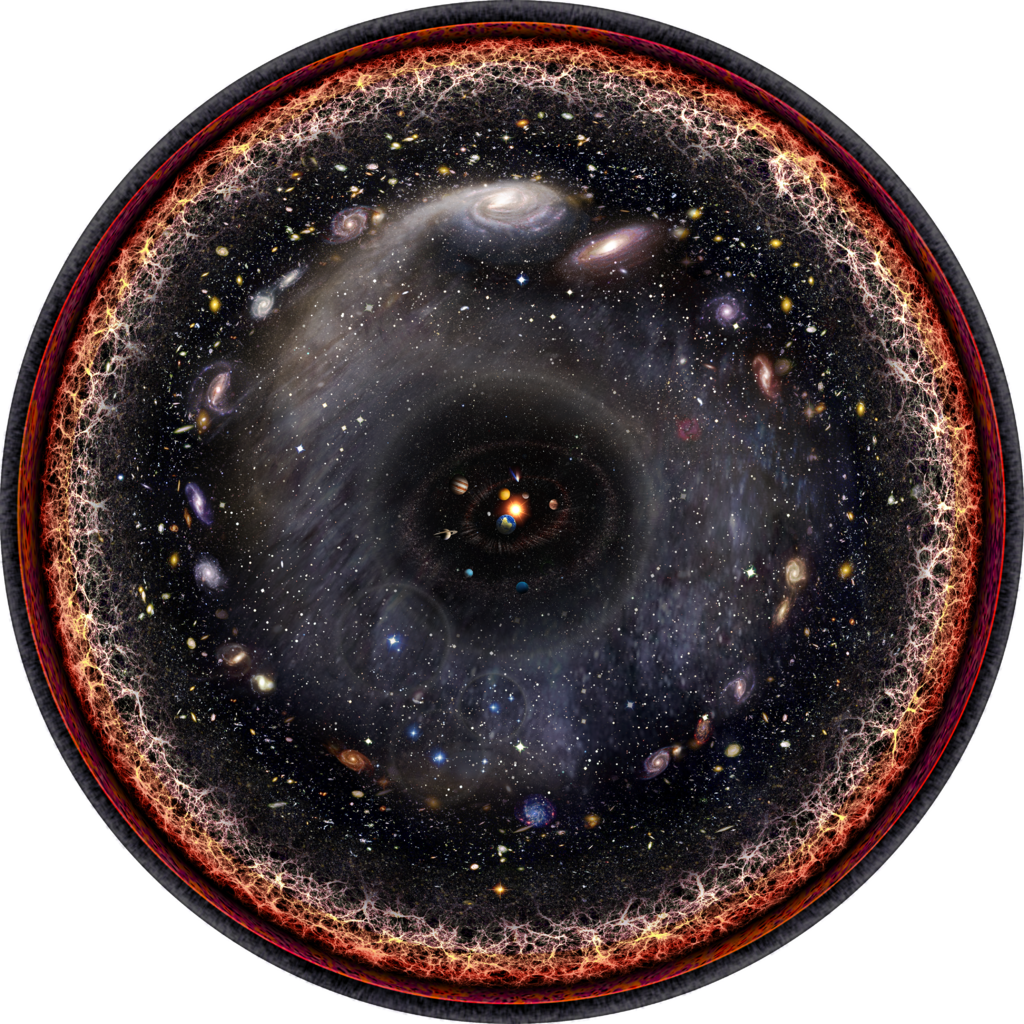 Logarithmic image of the observable universe in the artist's view
Logarithmic image of the observable universe in the artist's view1) Substance is everywhere, and light moves at the speed of light. By default, people develop exactly this picture. You can imagine a universe filled with stars and galaxies wherever you look, and the fact that these stars and galaxies began to form almost immediately after the beginning of everything. Therefore, the longer we wait, the further we can see, as the light moves in a straight line at the speed of light. Therefore, after 13.8 billion years, we can expect that we will be able to glance back almost 13.8 billion years, deducting only the time it took to form stars and galaxies after the Big Bang.
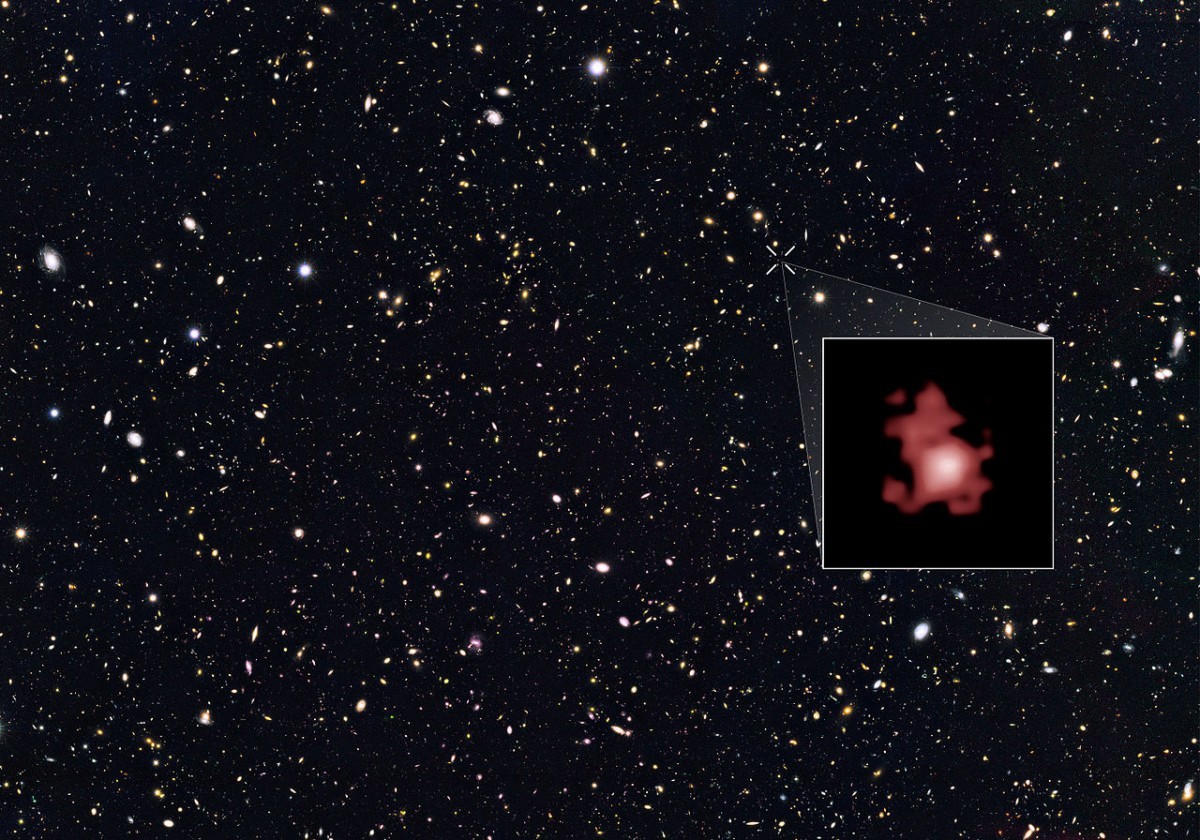
2) The substance is everywhere, the light moves with speed c, and everything can move in space. The problem has another level - there is not only a bunch of light emitting substance, but these objects also move relative to each other. Since they can move at almost the speed of light according to the rules of SRT, and the light moves in your direction at the speed of light, we can expect that we will be able to look at a distance of almost twice as much as in the first paragraph. Objects may now be at a distance of 27.6 billion light years from us, if the light they emit has just now reached us, and they themselves move from us at almost the speed of light.

3) Substance is everywhere, the light moves with speed c, everything can move in space, and the Universe expands. This last level is the most unintuitive, and causes the most problems. Yes, space is filled with matter, which quickly accumulates into stars, galaxies and larger structures. Yes, the light emitted by it moves with the speed c, the speed of light in a vacuum. All this matter can move in space, most often due to the mutual gravitational attraction of various sections with increased and decreased density. All this is as it was in option 2.
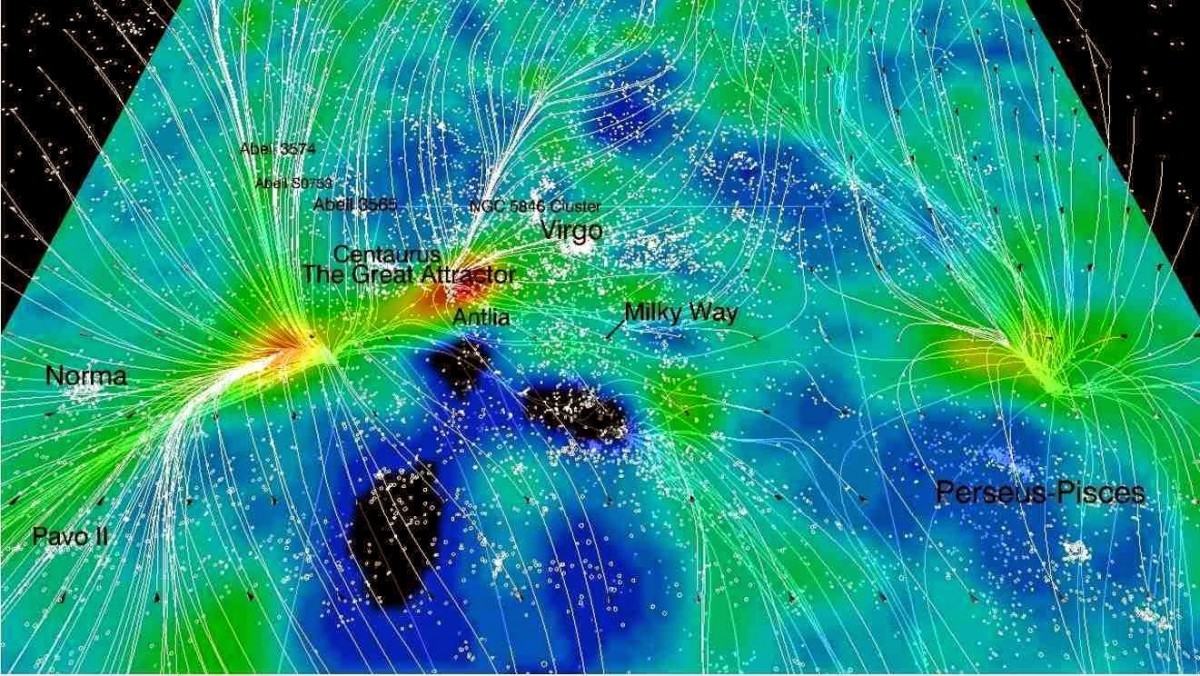
The fact that space itself is expanding is also being added. When you look at a distant galaxy and see that it is redder than normal, it is considered that it is redder because of the movement directed away from us, as a result of which the light shifts to the red part of the wave spectrum. In the same way, the sound of a siren moving away from you shifts to longer waves and seems lower. But this all applies to the second option. GTR adds another point, the expansion of space. And with the expansion of the Universe, the fabric of space is stretched, and the length of individual light waves in space also increases!

You may decide that these two effects cannot be distinguished. If all that can be measured is the wavelength of light reaching your eye, how can you be sure if it has stretched due to movement or due to the fabric of space? It turns out that there is a relationship between the redshift (and hence the wavelength) and the observed brightness of the galaxy, depending on the distance. In a non-expanding universe, as we described earlier, the maximum distance you can look at is two ages of the universe in light years: 27.6 billion light years. But in our today's universe we have already seen more distant galaxies!
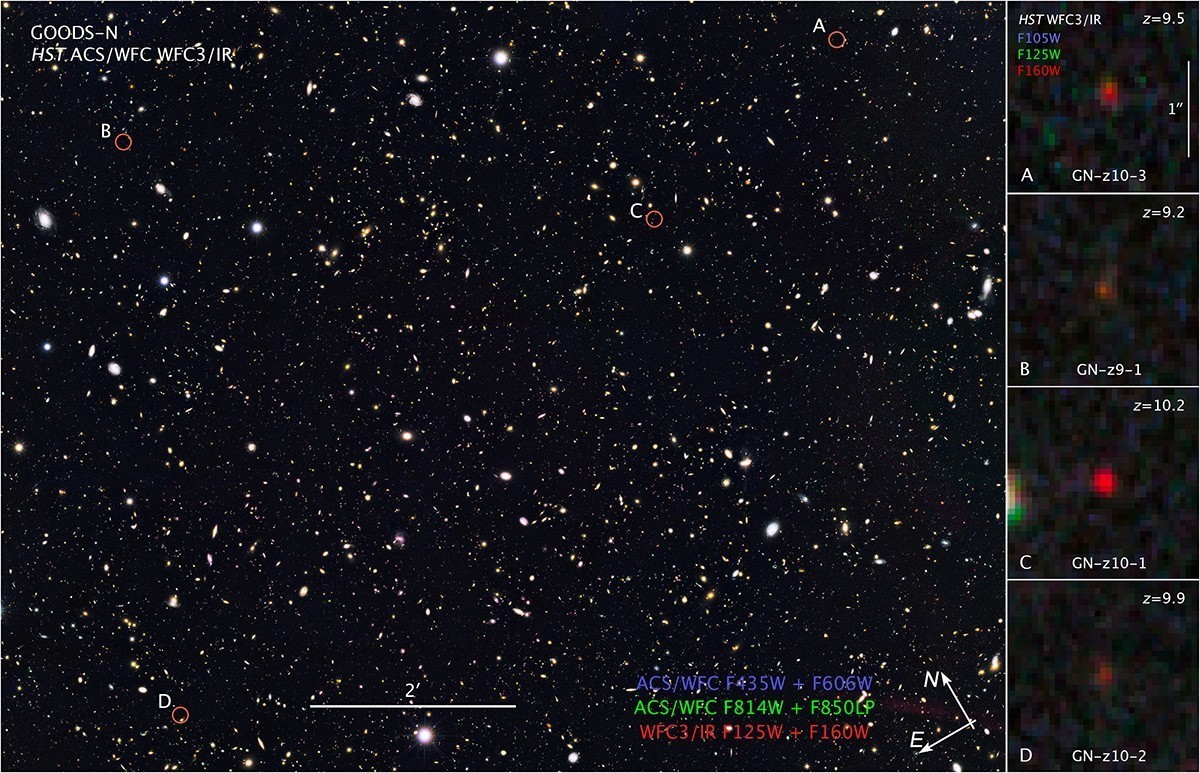 Overview GOODS-North, in the photo one of the most distant galaxies from all that we have seen. Most are outside of 30 billion light years.
Overview GOODS-North, in the photo one of the most distant galaxies from all that we have seen. Most are outside of 30 billion light years.So how far can we look? If there were no dark energy in the Universe, then the farthest objects - stars, galaxies, residual luminescence from the Big Bang, etc. - 41.4 billion light years would be limited. But in the Universe with dark energy, this value is even greater, and is about 46 billion light years for the observable dark energy.
blogs-images.forbes.com/startswithabang/files/2016/08/1-U1TKSOmpfiu_JRkSDzPquA.jpgDashed line - SRT predictions, solid - GR, for distances in an expanding Universe. Observations coincide with the predictions of GR.
Putting it all together, we get that the distance at which we see the Universe, from one end to the other, is 92 billion light years. Do not forget that it is constantly expanding. If we set off today at the speed of light, we would be able to walk only a third of its size across, about 3% of its volume.
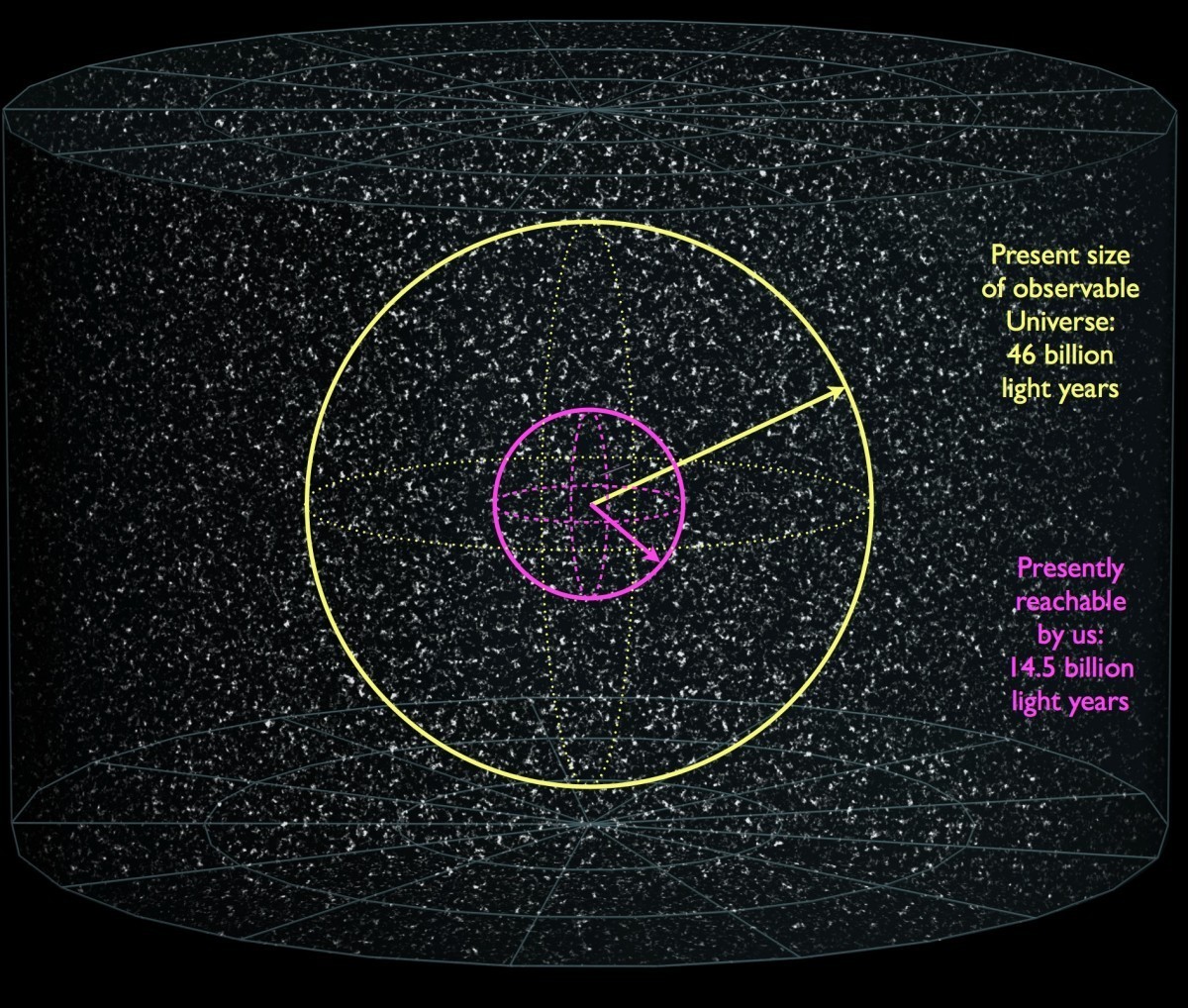
Therefore, although 92 billion light years seem to be a large value for the Universe with an age of 13.8 billion years, but this is the correct value for a Universe filled with matter, dark energy, and obeying the laws of general relativity. The reason for such a huge size is the fact that space is expanding, and that new space is constantly being created in the intervals between connected galaxies, groups and clusters. If we take into account all that is in it, what controls it and how it appeared, it turns out that it could not be otherwise.